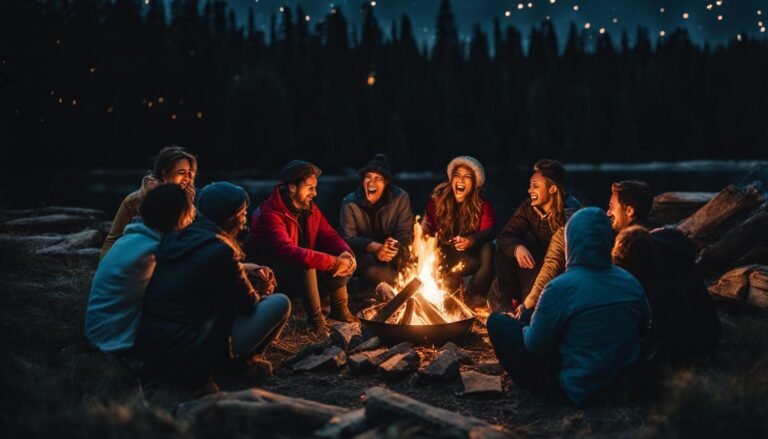What to Bring Hiking (30 Items Listed)
Discover the ultimate hiking checklist! Learn what to bring hiking for a safe, enjoyable, and well-prepared trek. From clothing to navigation tools, explore essential gear now.
Hiking in nature offers a chance to immerse oneself in the beauty of the great outdoors, where stunning landscapes and serene wilderness await.
Yet, to truly enjoy this experience and ensure your safety, it’s crucial to be well-prepared. This guide will outline the essential items you should bring on your hiking adventures, each carefully selected to enhance your journey and address potential challenges.
What to Bring Hiking
From clothing and navigation tools to personal items and emergency supplies, this comprehensive list will help you embark on your hike with confidence.
Clothing and Footwear
Weather-appropriate clothing
Proper outdoor attire is crucial for a successful hike, considering climate and temperature changes. Layering with moisture-wicking materials ensures comfort throughout the journey.
Sturdy and comfortable hiking boots
Invest in hiking boots that offer ankle support and comfort on rugged terrain. Ensuring a proper fit is vital for preventing discomfort and blisters on the trail.
Navigation Tools
Topographic map of the area
Obtain a topographical map to navigate challenging terrain and identify geographic features accurately.
Compass or GPS device
Equip yourself with navigation tools like a compass or GPS device to stay on the right path, enhancing orienteering skills.
Trail guidebook or app
Use a hiking guidebook or a mobile trail app for detailed trail information, including difficulty levels, points of interest, and trail maps.
Fully charged mobile phone with maps and emergency contacts
Keep your smartphone charged and loaded with GPS navigation apps and emergency contacts to stay connected and prepared.
Backpack and Essentials
Lightweight and comfortable backpack
Choose a backpack with an ergonomic design that evenly distributes weight, offering sufficient capacity for your gear.
Hydration system or water bottles
Stay hydrated by carrying a hydration reservoir or reusable water bottles to ensure access to clean water during the hike.
High-energy snacks
Pack energy-boosting snacks like trail mix, energy bars, and dried fruits to maintain your energy levels throughout the hike.
First aid kit
Include medical supplies in your first aid kit for emergency care and injury prevention. Bandages, antiseptic wipes, and blister treatment are essential components.
Multi-tool or knife
Carry a versatile multi-tool or knife to handle various tasks, such as cutting rope, opening packages, or repairing gear.
Headlamp or flashlight with extra batteries
Ensure you have proper illumination with a headlamp or flashlight equipped with extra batteries for night hiking or low-light conditions.
Sun Protection
Sunscreen with high SPF
Sunscreen with a high SPF is vital for protecting your skin from harmful UV rays. Applying sunscreen prevents sunburn and long-term skin damage.
Wide-brimmed hat or cap
Wearing a wide-brimmed hat or cap shields your face and neck from direct sunlight, reducing the risk of heat-related issues and sunburn.
Sunglasses with UV protection
Sunglasses with UV protection safeguard your eyes from harmful ultraviolet rays, enhancing comfort and reducing the risk of eye strain and damage.
Insect Protection
Insect repellent
Apply insect repellent to ward off mosquitoes and other biting insects, ensuring a more pleasant and bite-free hiking experience.
Tick removal tools
Carry tick removal tools to swiftly and safely remove ticks, reducing the risk of tick-borne diseases while hiking in tick-prone areas.
Emergency Supplies
Whistle for signaling
A whistle is a compact and effective signaling tool, invaluable for alerting others in case of an emergency or when assistance is needed.
Fire-starting equipment (matches or lighter)
Fire-starting equipment, such as waterproof matches or a reliable lighter, is crucial for starting fires in emergency situations, providing warmth and signaling capabilities.
Space blanket or emergency bivvy
A space blanket or emergency bivvy reflects body heat, offering warmth and protection against hypothermia during unexpected cold weather or overnight stays.
Basic repair kit for gear
A basic repair kit for gear includes essential items like duct tape, repair patches, and a sewing kit, ensuring you can address equipment damage on the trail.
Personal Items
Identification (ID card or driver’s license)
Carrying identification, such as an ID card or driver’s license, is crucial for emergency situations and identification purposes.
Personal medications and first-aid specific to individual needs
Bring personal medications and first-aid items tailored to your specific medical needs, ensuring you can manage any health concerns that may arise.
Cash or cards for emergencies
Keep cash or cards on hand for emergencies or unexpected situations that require payment or assistance.
Cell phone charger and portable power bank
A cell phone charger and portable power bank ensure that your phone remains charged, allowing communication and access to essential apps, such as maps and emergency contacts.
Leave No Trace Principles
Trash bag for packing out waste
Carry a trash bag to pack out waste, adhering to Leave No Trace principles and preserving the natural environment.
Biodegradable soap for washing dishes or hands
Use biodegradable soap to wash dishes and hands responsibly, minimizing the environmental impact of your camping and hiking activities.
Optional Items
Camera or binoculars for wildlife and scenery
A camera or binoculars enhance your hiking experience by allowing you to capture memorable moments and observe wildlife and scenery more closely.
Trekking poles for stability and reduced strain
Trekking poles provide stability, reduce strain on joints, and improve balance, especially on challenging terrain.
Field guide for identifying flora and fauna
A field guide assists in identifying local flora and fauna, deepening your appreciation for the natural world during your hike.
In conclusion, the great outdoors beckons with its wonders, but the key to an enjoyable and safe hiking experience lies in preparation. Equipping yourself with the right gear, as outlined in this guide, ensures you’re ready for whatever nature may bring your way.
So, whether you’re venturing into the mountains, exploring the forest, or hiking along scenic trails, remember that a well-chosen backpack, weather-appropriate clothing, and a comprehensive set of essential items can make all the difference.







